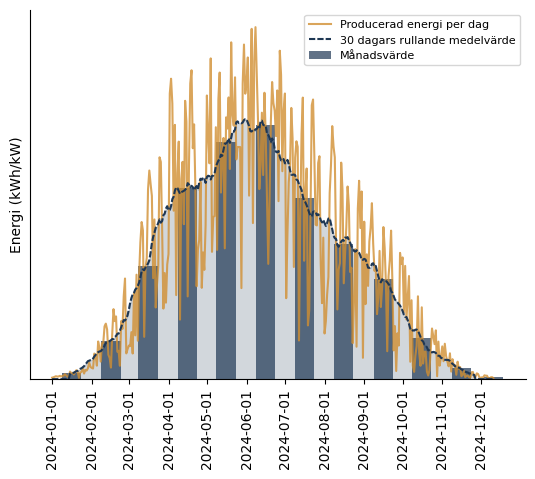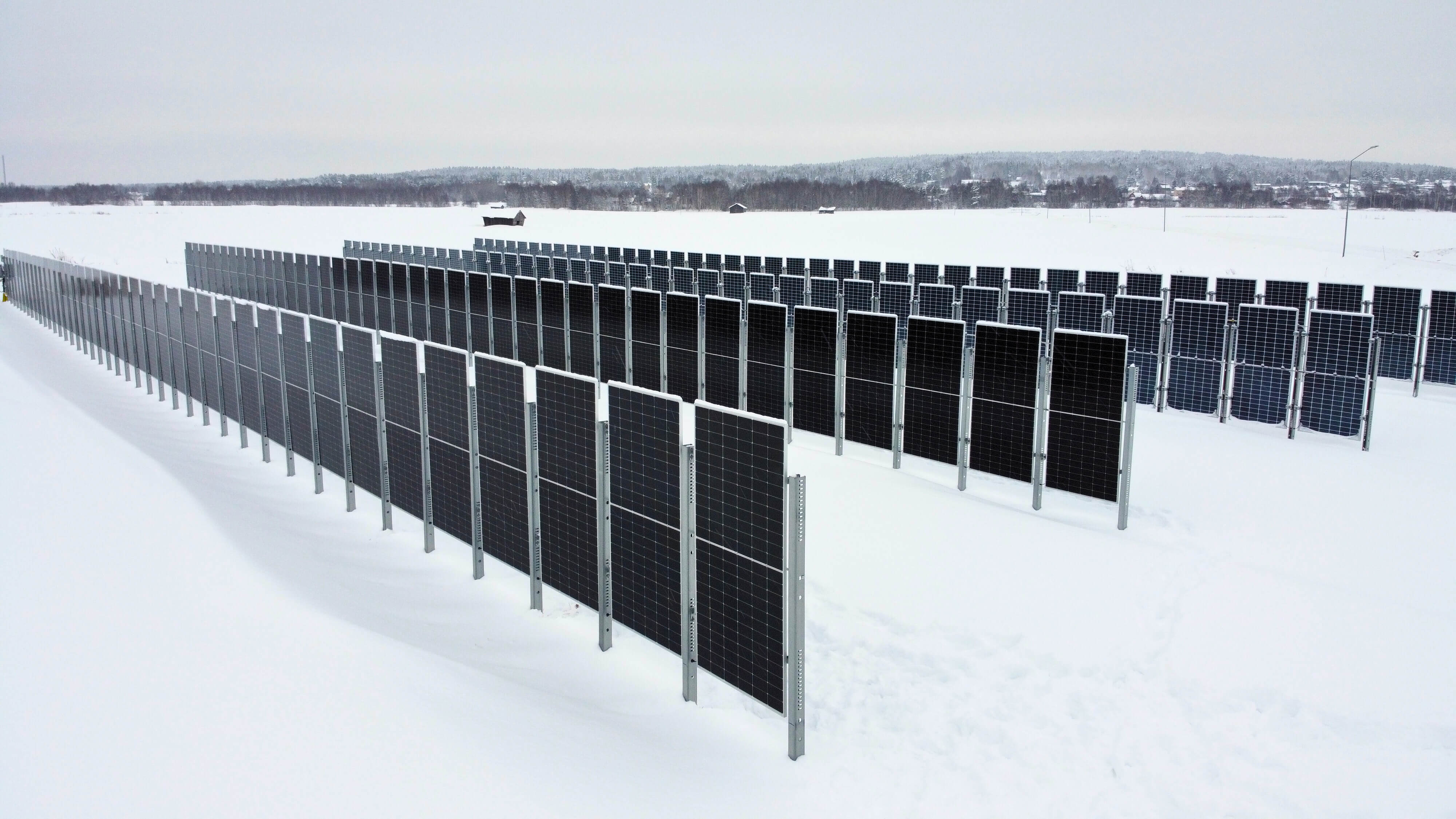/https%3A%2F%2Fsunnagroup.com%2Fwp-content%2Fuploads%2F2024%2F12%2FLillaNorrskenet1y.png)
The shortest day of the year is almost here and what fits better than to look back on how our pilot plant Lilla Norrskenet with vertical panels outside Luleå has done in its first year of operation?
The Lilla Norrskenet pilot project outside Luleå was commissioned in mid-December 2023 and has now been in operation for a year. The facility is designed with vertically mounted solar panels, a configuration that addresses the challenges of snow accumulation and maximizes energy production throughout the year. The pilot project demonstrates a way to pave the way for expanded use of solar energy in regions with challenging weather conditions.
The pilot plant is located adjacent to Alviksgården outside Luleå and features vertically mounted bifacial panels facing east and west. The design reduces losses from snow shading compared to traditional inclined panels where snow easily accumulates and risks remaining for a longer time. With reduced issues from snow accumulation, the park can also benefit from reflections from snow-covered ground on sunny winter days.

Luleå is one of Sweden’s sunniest places in terms of the number of hours of sunshine per year, and in summer it is often ranked at the top alongside places on Gotland, Öland and Stockholm’s outer archipelago. As well as dealing with winter challenges, Lilla Norrskenet’s vertical panels benefit from the longer days of daylight in the summer months. The east-west orientation allows the panels to capture sunlight throughout the entire day and night in summer, maximizing energy production.
Around the summer solstice in June, the plant was producing around the clock, with a steeply rising production curve from 2 a.m. until 11 p.m., before slowing down, but not coming to a complete stop, when the sun was at its lowest point on the horizon. By comparison, on the darkest days of winter a year ago, the plant produced at its peak between 10 am and 1 pm.
An additional advantage is the production profile achieved with vertical panels in an east-west direction. For south-facing tilted panels, electricity production peaks in the middle of the day when the sun is at its highest, and then drops in the late afternoon and evening. This creates a pattern where there is a surplus of electricity in the middle of the day, and rapidly declining levels when demand is highest in the afternoon and evening.
The production curve for vertical panels instead has two peaks, in the morning and afternoon, and drops slightly in the middle of the day. This can help ensure that the energy produced from the sun better matches the demand on the consumption side.
The picture below shows an example of what it might look like on a summer day at the plant. The orange and yellow dashed lines show the solar irradiation in the same plane as the panels from two sensors placed facing east and west.

Lilla Norrskenet demonstrates the potential of renewable energy in challenging climates. The project serves as a model for the future development of solar energy in snowy regions and shows that vertically mounted solar panels are an efficient and feasible method. The data collected from the pilot project will provide valuable insights into how this configuration works, which will inform the development and implementation of future solar projects in similar environments.
In March 2024, researchers from the US Department of Energy and the National Renewable Energy Laboratory (NREL), among others, visited Lilla Norrskenet to get inspiration for how vertically mounted panels could be used at research stations in Antarctica. It is hoped that a combination of solar cells, wind turbines and battery storage could be a cost-effective way to expand research capacity at the South Pole and reduce dependence on diesel fuel.

The Lilla Norrskenet project has been awarded the prestigious Solar Energy Prize 2024 for the most exciting and innovative ground-mounted solar installation. The award highlights the project’s groundbreaking contribution to the industry and its potential to drive the transition to a more renewable energy system.
“This year’s solar energy award for best ground-mounted installation goes to Lilla Norrskenet, by Sunna Group. The winner has taken matters into its own hands and invested in this pilot plant. With its 90 kWp, the plant is large enough to evaluate the potential for electricity production and profitability of large vertical solar parks in Norrland.”
The 2024 production data* in the graph below shows how production has varied over time on a monthly and daily basis, and with a rolling average of 30 days. The graph shows that the variation was greatest in the fall due to variable weather. The result was a front-heavy distribution over the year, i.e. a higher production in the spring compared to the corresponding fall months. It will be exciting to see what the production curve and variations for the coming years will look like.

*The annual graph only shows production until December 11, 2024.

Location: Luleå, Sweden (SE1)
Power: 90 kWp bifacial panels
Orientation: four rows of vertical panels, two rows facing east and two towards west
Commissioning: December 2023
Owned by: Sunna Group
Design advantages: